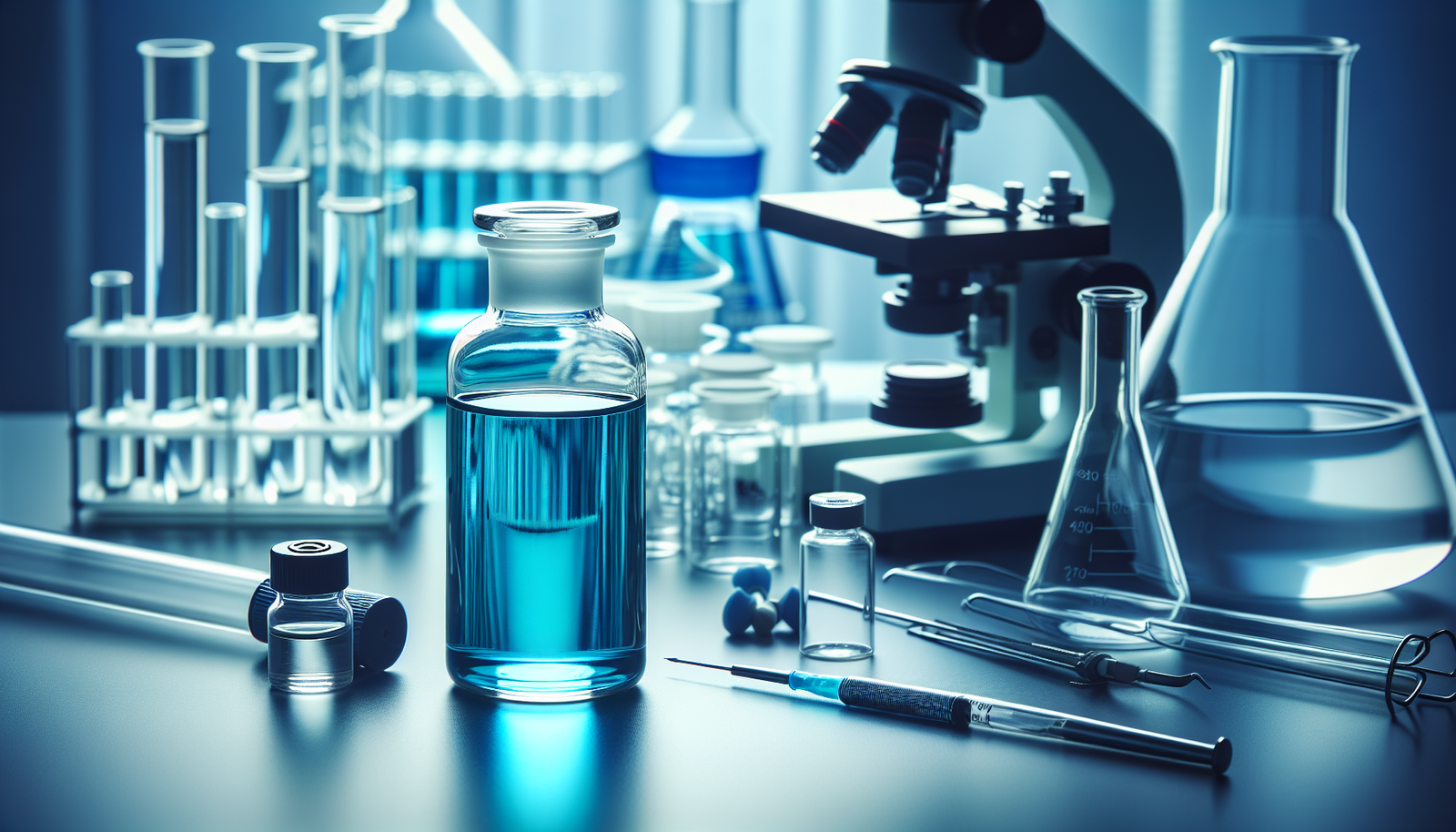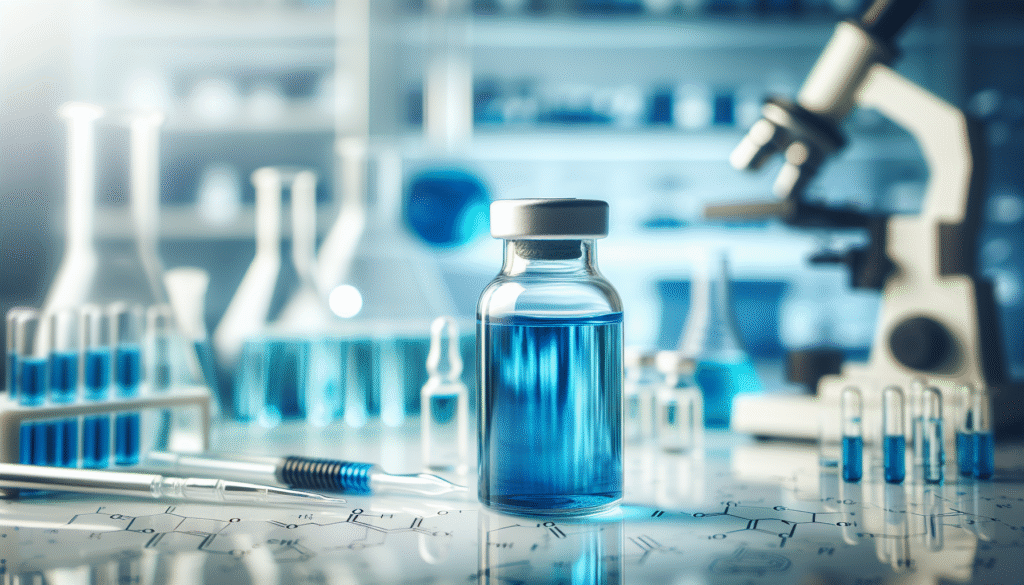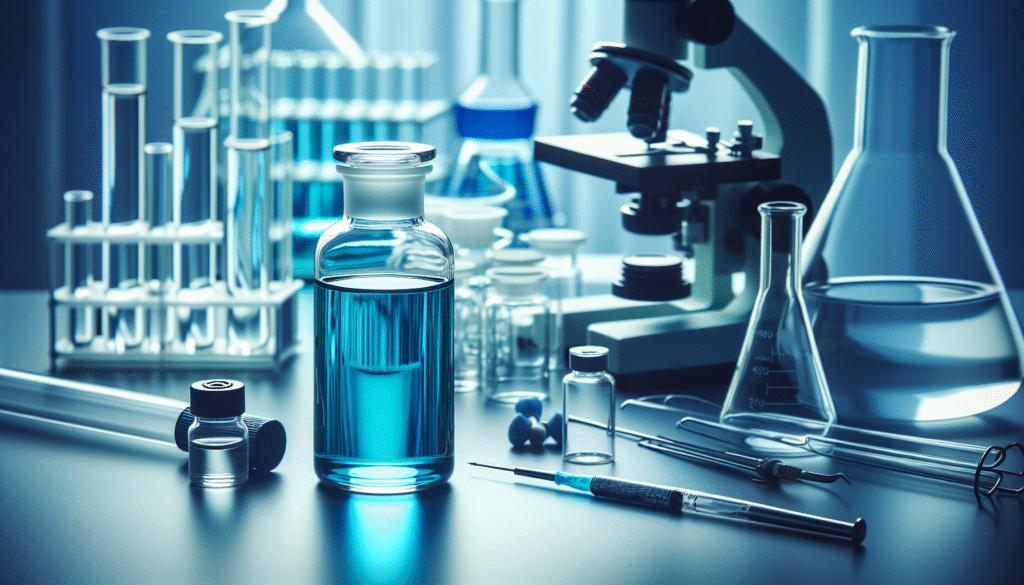
Have you ever considered the pivotal role that chemical compounds play in scientific research and experimentation? Among these, methylene blue stands out as a versatile compound with a multitude of applications in laboratory settings. Understanding its properties and uses can significantly enhance your research outcomes and methodologies. This article delves into the top uses of methylene blue in laboratory environments, providing a comprehensive overview of its significance across various scientific fields.

What is Methylene Blue?
Methylene blue, known chemically as thionine, is a synthetic dye and medication with a rich history in both scientific research and clinical applications. Originally developed as a dye in the late 19th century, it is renowned for its vivid blue color. Methylene blue is soluble in water and exhibits remarkable properties that make it valuable in various biotechnology and microbiology applications.
Chemical Properties
Methylene blue has a molecular weight of 319.85 g/mol, and its chemical formula is C16H18ClN3S. It is a cationic dye, meaning it carries a positive charge in solution, which makes it interact strongly with negatively charged biological molecules. This property makes it particularly useful in staining and microscopy applications.
Historical Context
The use of methylene blue extends back over a century. Initially employed as a textile dye, it later found application in biological staining and as an antimalarial agent. Its history is a testament to its versatility and enduring relevance in both clinical and laboratory settings.
Methylene Blue in Microbiology
One of the primary applications of methylene blue in laboratory settings is its use in microbiology, particularly for staining procedures. The following subsections detail its uses and benefits in this field.
Staining Procedures
Gram Staining
Methylene blue is often utilized in the Gram staining process, a vital technique for classifying bacteria. In this process, methylene blue acts as a counterstain. After applying a crystal violet dye, which stains all cells purple, methylene blue can help visualize Gram-negative bacteria that do not retain the primary dye during the decolorization step.
Vital Staining
Vital staining is a technique applied to distinguish living cells from dead ones. Methylene blue can penetrate dead cells, where it binds to nucleic acids, while living cells actively exclude the dye. This differential uptake allows researchers to assess cell viability easily.
| Application | Description |
|---|---|
| Gram Staining | Counterstain for visualizing Gram-negative bacteria |
| Vital Staining | Differentiating living cells from dead cells |
Enhancing Visualization
In addition to its role in staining, methylene blue enhances the visualization of cellular structures. Under a microscope, methylene blue can highlight organelles and cellular components, providing clarity in identifying morphological characteristics.
Assisting in Antibiotic Susceptibility Testing
Methylene blue also aids in antibiotic susceptibility testing. By incorporating it into culture media, researchers can monitor the growth of bacterial colonies in the presence of antibiotics, determining their efficacy.
Methylene Blue in Histology
As an essential component in histological studies, methylene blue is used for staining tissue sections to enhance microscopic observations.
Tissue Staining
In histology, methylene blue is particularly useful for staining tissues to visualize cellular structures, such as nuclei, cytoplasm, and connective tissue. It helps researchers to differentiate between various tissue types and study their morphology.
| Histology Application | Description |
|---|---|
| Tissue Staining | Enhances visualization of tissues |
Fixative Agent
Methylene blue can also serve as a fixative agent, preserving tissue integrity during preparation and staining processes. It helps maintain the morphological features of cells and tissues, ensuring accurate representation under microscopic analysis.
Applications in Molecular Biology
Methylene blue’s utility extends to molecular biology, where it plays a vital role in various assays and experiments.
Nucleic Acid Staining
DNA Visualization
In molecular biology, methylene blue can be employed as a nucleic acid stain. It binds to DNA, allowing for visualization during gel electrophoresis. Researchers often use this application to confirm the presence and integrity of extracted DNA samples.
RNA Visualization
Similar to its use with DNA, methylene blue can also stain RNA. By providing a means to visualize RNA bands during electrophoresis, it assists researchers in evaluating RNA quality and quantity.
| Molecular Biology Application | Description |
|---|---|
| DNA Visualization | Stains DNA for gel electrophoresis |
| RNA Visualization | Stains RNA during analysis |
Photodynamic Therapy Research
Methylene blue has made strides in photodynamic therapy (PDT) research, particularly in cancer treatment. Its ability to absorb light at specific wavelengths enables it to produce reactive oxygen species (ROS) when exposed to light, leading to localized cell destruction.

Role in Cellular Biology
In the realm of cellular biology, methylene blue serves as a critical tool for understanding cell dynamics and functions.
Cell Cycle Studies
Methylene blue can help researchers study the cell cycle by staining nuclei and determining cell size and shape. This information is crucial for understanding the proliferation and health of cell populations.
Apoptosis Induction Studies
Apoptosis, or programmed cell death, is a vital mechanism in maintaining cellular homeostasis. Methylene blue is sometimes used in apoptosis studies, where its staining capacity helps visualize early apoptotic changes in cell morphology.
| Cellular Biology Application | Description |
|---|---|
| Cell Cycle Studies | Assists in evaluating cell proliferation |
| Apoptosis Induction Studies | Visualizes morphological changes in apoptosis |
Medical Applications of Methylene Blue
Beyond laboratory settings, methylene blue has several medical applications that are noteworthy, particularly in the realm of diagnostics and treatment.
Antidote for Methemoglobinemia
Methylene blue is clinically utilized as an antidote for methemoglobinemia, a condition where hemoglobin is unable to carry oxygen effectively. It works by facilitating the conversion of methemoglobin back to hemoglobin, restoring normal oxygen transport.
Antimicrobial Properties
The compound exhibits antimicrobial properties, making it useful in treating and preventing infections. Methylene blue is sometimes used in antiseptic solutions for skin disinfection before surgical procedures.
| Medical Application | Description |
|---|---|
| Antidote for Methemoglobinemia | Converts methemoglobin to hemoglobin |
| Antimicrobial Properties | Disinfects and prevents infections |
Methylene Blue in Environmental Studies
Methylene blue finds application in environmental science as well, particularly for studying pollutants and the environmental impact of chemicals.
Water Quality Testing
Methylene blue is used in assessing water quality, particularly in detecting the presence of biological contaminants. Its staining properties enable researchers to stain microorganisms present in water samples, providing a quantitative measure of contamination.
Soil Contamination Analysis
In soil studies, methylene blue can help identify the presence of heavy metals by forming complexes with these contaminants. This application is vital for soil restoration and remediation efforts.
| Environmental Application | Description |
|---|---|
| Water Quality Testing | Stains microorganisms in water samples |
| Soil Contamination Analysis | Identifies heavy metals in soils |
Considerations and Safety
While methylene blue is broadly useful, safety considerations must be adhered to while handling it in laboratory settings.
Toxicity Concerns
Methylene blue can be toxic in high concentrations, and safety data sheets should always be consulted. It is essential to wear proper personal protective equipment (PPE) when using the compound to avoid harmful exposure.
Environmental Impact
For environmental applications, it is vital to consider the ecological impact of methylene blue when used as a tracer or indicator. Clear protocols should be established to prevent ecological disturbances.
Conclusion
Methylene blue is a multifaceted compound that plays a crucial role across various laboratory settings, from microbiological research to environmental studies. Its staining properties, coupled with its use in molecular biology and medical applications, make it an indispensable tool for researchers. Understanding its various uses not only enhances your ability to conduct thorough investigations but also underscores the importance of safety and ethical considerations in scientific research.
As you continue to explore the vast world of scientific inquiry, incorporating methylene blue into your methodologies can significantly elevate your research and contribute to the advancement of knowledge in your field. Embrace the potential of this complex dye, and consider how it can serve as a valuable asset in your future experiments.